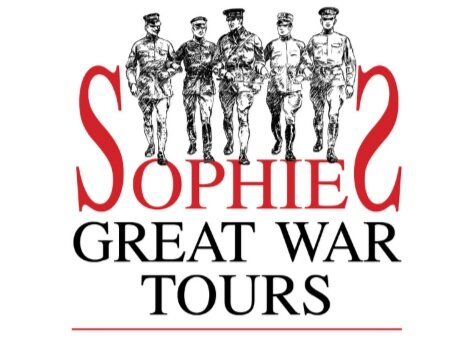Sergeant Albert Gill is a Victoria Cross recipient. His actions clearly mark him out as someone that served and saved, thus making the SGWT advent calendar.
Albert was born in Birmingham on 8 September 1879. He joined the Army soon after leaving school and was posted to India with the Kings Royal Rifle Corps. He served his full time with the colours and upon finishing his service was placed on the reserve.
After leaving the Army Albert followed his father and brother into employment as a tube drawer (a metalworker who made metal tubes) with Earle, Bourne and Co Ltd of Heath Street (later Delta Metals) which at the time specialised in making bed frames. He spent six years with the company and it is reported that he began work with the General Post Office around 1907 sorting the mail at the head Post Office in Birmingham.
When war was declared, Albert was recalled to the colours with the 1st Battalion, Kings Royal Rifle Corps (KRRC). The Battalion was under the command of 6th Brigade in the 2nd Division. Albert would land in France on 13th August 1914 and he would see action throughout 1915.
It was on the Somme that Albert was to perform an act of heroism that would claim his life and preserve his name forever.
On the morning of 27th July 1916, the 1st Battalion KRRC were to attack with the 23rd Royal Fusiliers on their left. They advanced as the artillery bombardment lifted to the next line of attack but the advance was hampered by the undergrowth and rifle fire from the German trenches. The first objective, known as Princes Street trench was taken with few casualties and Albert was in the supporting company who passed through the first wave of attackers and on to the edge of the wood. ‘A’ Company, to which Albert belonged, had suffered a high number of casualties including all of their bombing section, the name given to teams specially trained in the use of hand grenades. At around 9.00am the Germans launched a counter attack and managed to pin down the British troops in the wood. The undergrowth aided the snipers and there was a distinct possibility that a gap which had developed between the KRRC and the 23rd Royal Fusiliers would lead to the Battalion being cut off. It was at this time that the actions of Gill were to result in his death. He organised his men into bombing parties and then, as the location of the enemy snipers was unknown, he stood up to draw their fire so that he could direct the fire of his men to the enemy. Albert was hit almost immediately but his actions ensured that the German counter attack was repulsed and Delville Wood was taken later that day. At the end of the battle the KRRC had suffered 14 officers and 308 other ranks killed or wounded.
On 10th August 1916, Albert’s Company Commander, Captain Stafford wrote to Albert’s wife and expressed:
‘Your husband was shot through the head and must have died at once. He would have known nothing about it. He was one of the most valued men in my company, a man whom anyone would be proud to call friend. He was loved by his platoon, of which I am sorry to say only four or five men remain. You should be justly proud of your husband in his life and death. He had one of the finest natures I have ever known. No words of mine can express my sympathy with you in your terrible sorrow.
The London Gazette proclaimed Albert’s VC citation as follows:
For most conspicuous bravery. The enemy made a very strong counter-attack on the right flank of the battalion and rushed the bombing post after killing all the company bombers. Serjeant Gill at once rallied the remnants of his platoon, none of whom were skilled bombers and reorganised his defences, a most difficult and dangerous task, the trench being very shallow and much damaged. Soon afterwards the enemy nearly surrounded his men by creeping up through the thick undergrowth and commenced sniping at about twenty yards range. Although it was almost certain death, Serjeant Gill stood boldly up in order to direct the fire of his men. He was killed almost at once but not before he had shown his men where the enemy were, and thus enabled them to hold up their advance. By his supreme devotion to duty and self-sacrifice he saved a very dangerous situation
Albert’s wife journeyed to Buckingham Palace to receive Albert’s VC. In 2000, it was purchased for £60,000 by the Lord Ashcroft Medal Collection and is displayed at the Imperial War Museum.
Visit the Locations
What I love about Albert’s story, is that it is possible to stand on the spot where Albert gathered his men, willing them on and supporting them. You can look into the thick undergrowth and imagine how difficult it was for the men to spot and engage their enemy. You can also imagine this brave man sacrificing himself for his comrades. Just across the way from the wood is Albert’s final resting place.
Walk in Albert’s Footsteps
If you’d like to follow Albert’s journey or indeed any other soldier, contact us today to arrange your own private bespoke tour.


